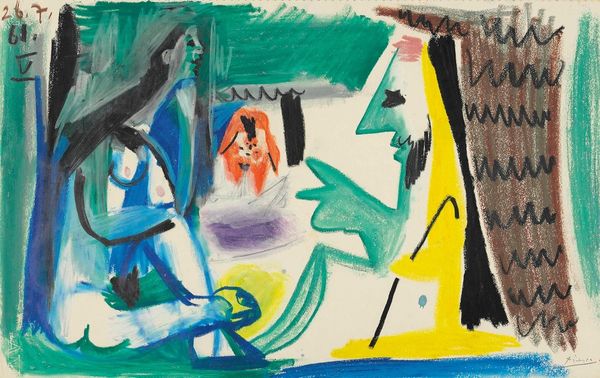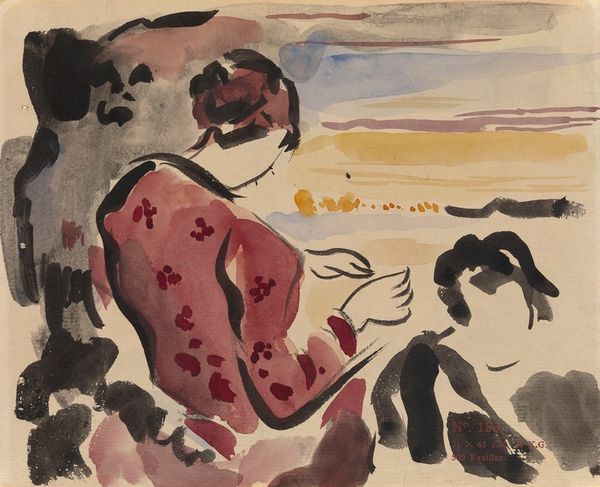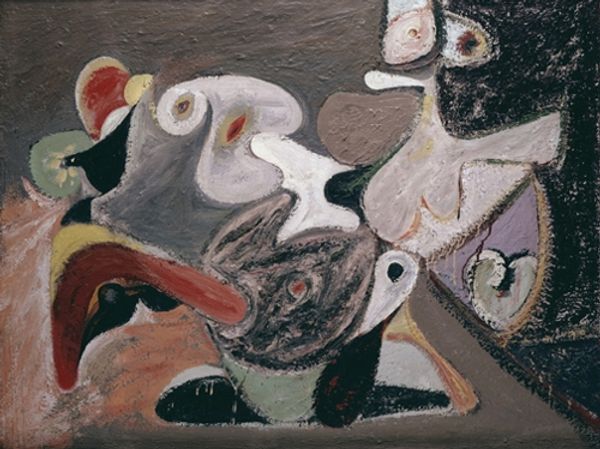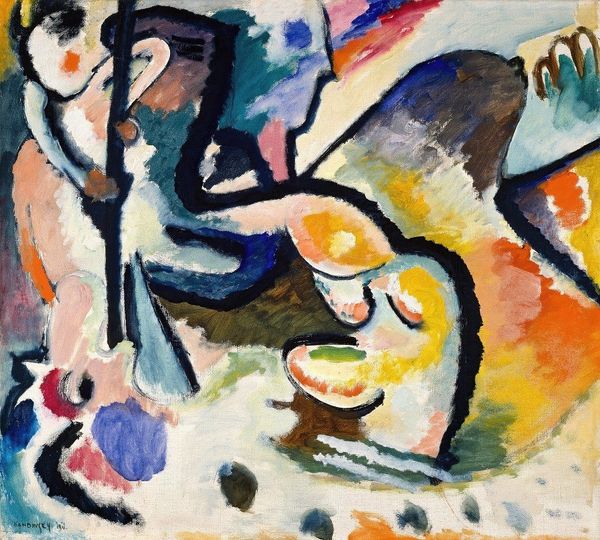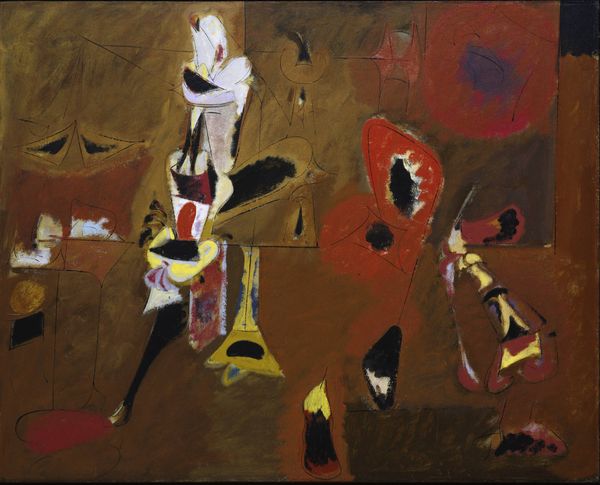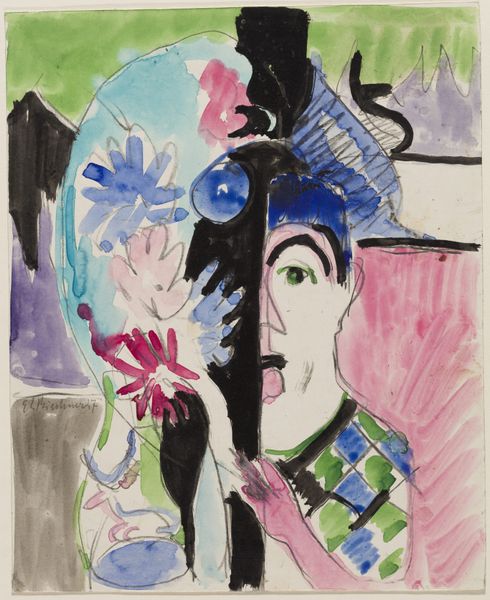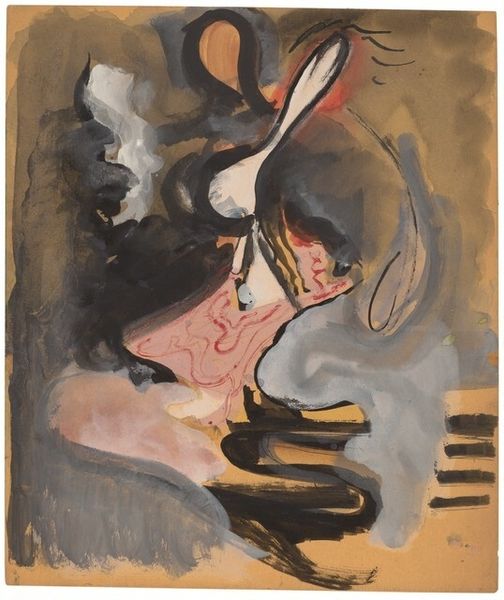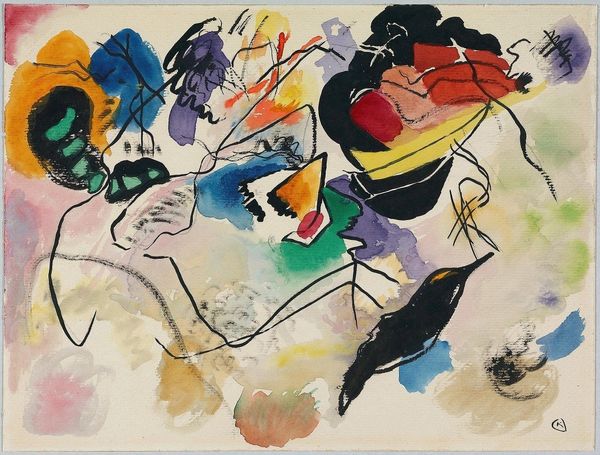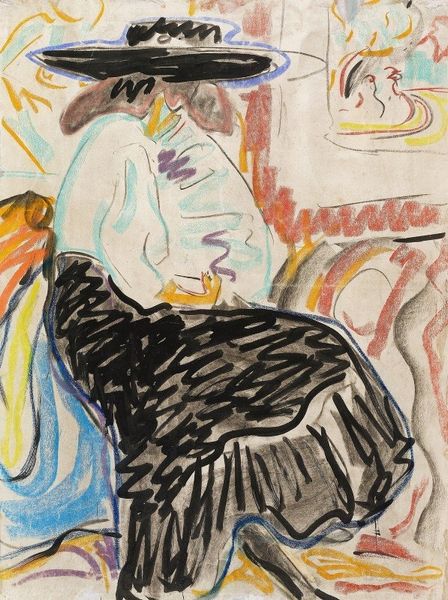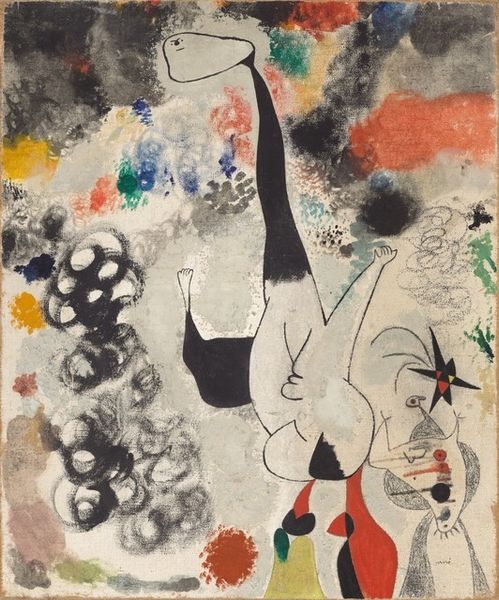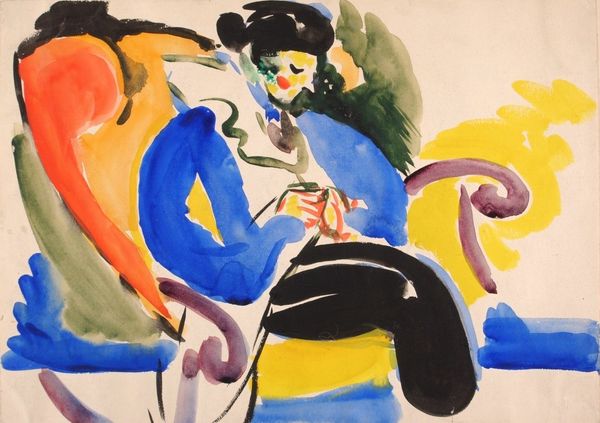
Copyright: Modern Artists: Artvee
Editor: So, this is Picasso’s *Le peintre et son modèle*, from 1964. It’s an oil painting, and it immediately strikes me as incredibly raw in its presentation of the artist and the nude model. What do you see happening in this painting? Curator: I'm interested in how Picasso presents the act of creation. Consider the materials: oil paint, canvas, brush. These are traditional tools, yet he disrupts tradition. Look at the flatness, the crude application. It speaks to a frantic pace, a direct, almost violent engagement with the materials. Editor: Violent? How so? Curator: The paint is applied in thick, gestural strokes, the figures are fragmented, almost deconstructed. It's not about beauty; it's about the physical struggle of representation. Think about the socio-economic context – post-war Europe, a boom in art commodity, and Picasso as a brand. Does this rawness become a calculated move, an artistic statement against polished perfection, accessible only to certain audiences? Editor: That’s a provocative idea! So, are you suggesting the “violence” is a reaction against the commercialization of art? Curator: It's a consideration. Picasso was keenly aware of his position in the market. He controlled production and consumption. This painting could be read as both a critique and an embrace of his power within the art world. Editor: I hadn’t thought of it that way before. I was too focused on the subject matter, not the social forces shaping its production. Curator: Exactly. Material analysis pushes us to question the role of the artist, the value of labor, and the relationship between art and capital. Hopefully that adds another layer for our listeners.
Comments
No comments
Be the first to comment and join the conversation on the ultimate creative platform.

